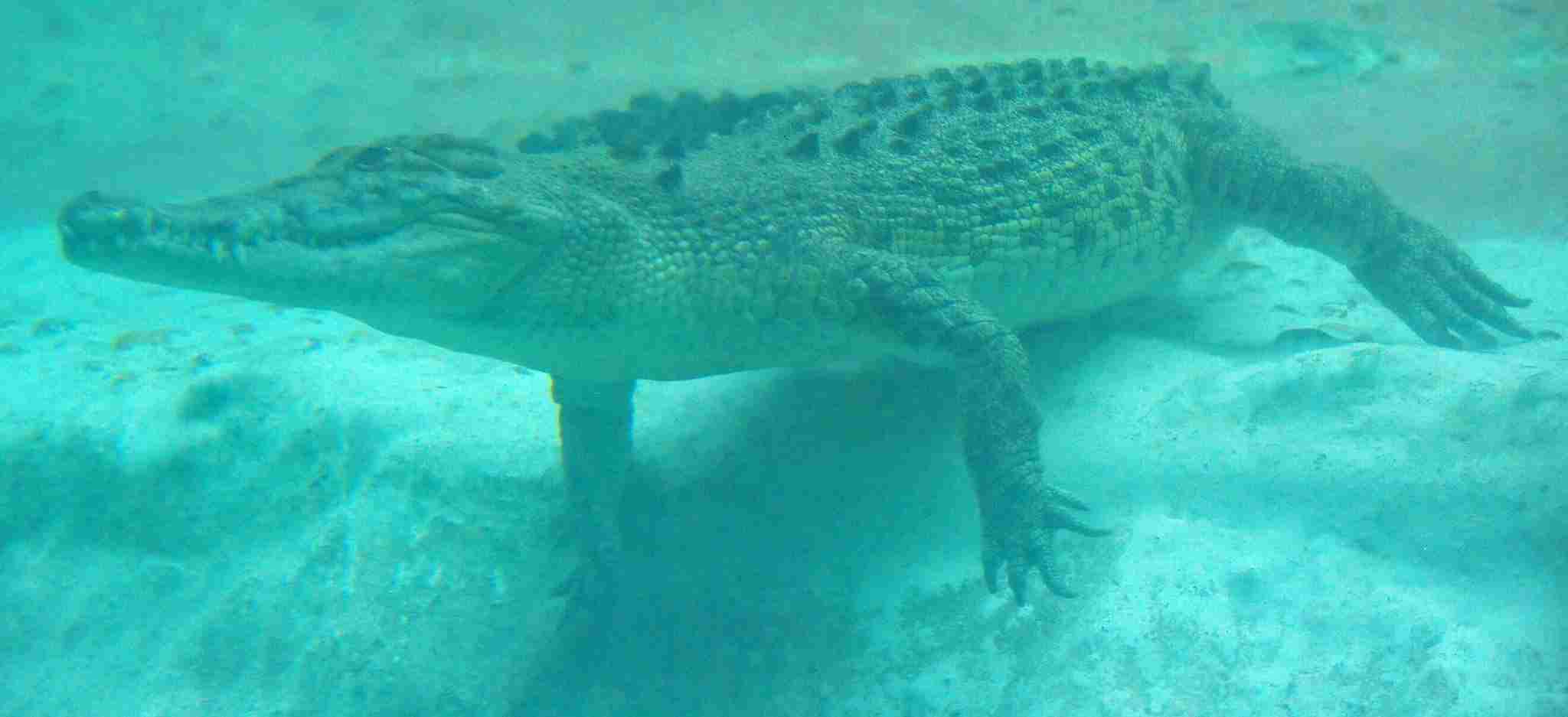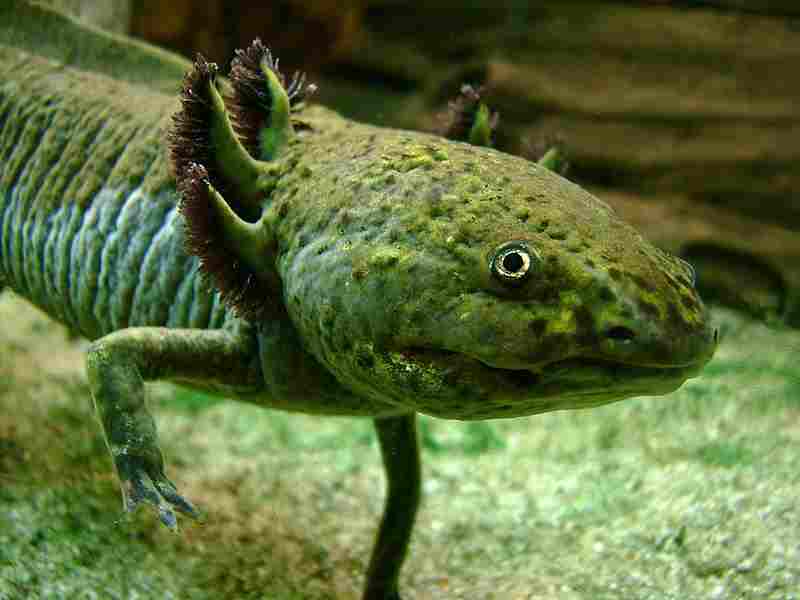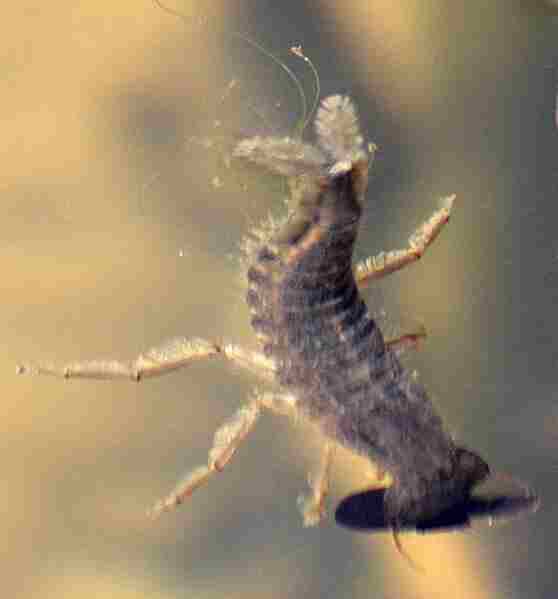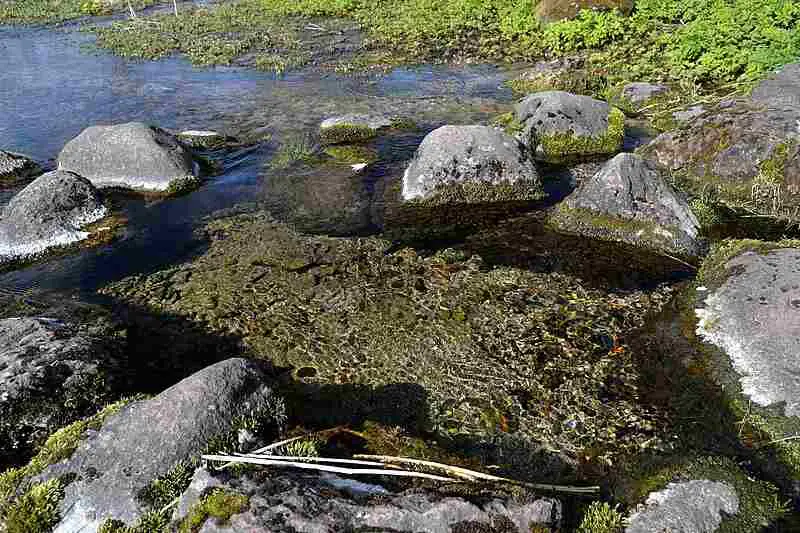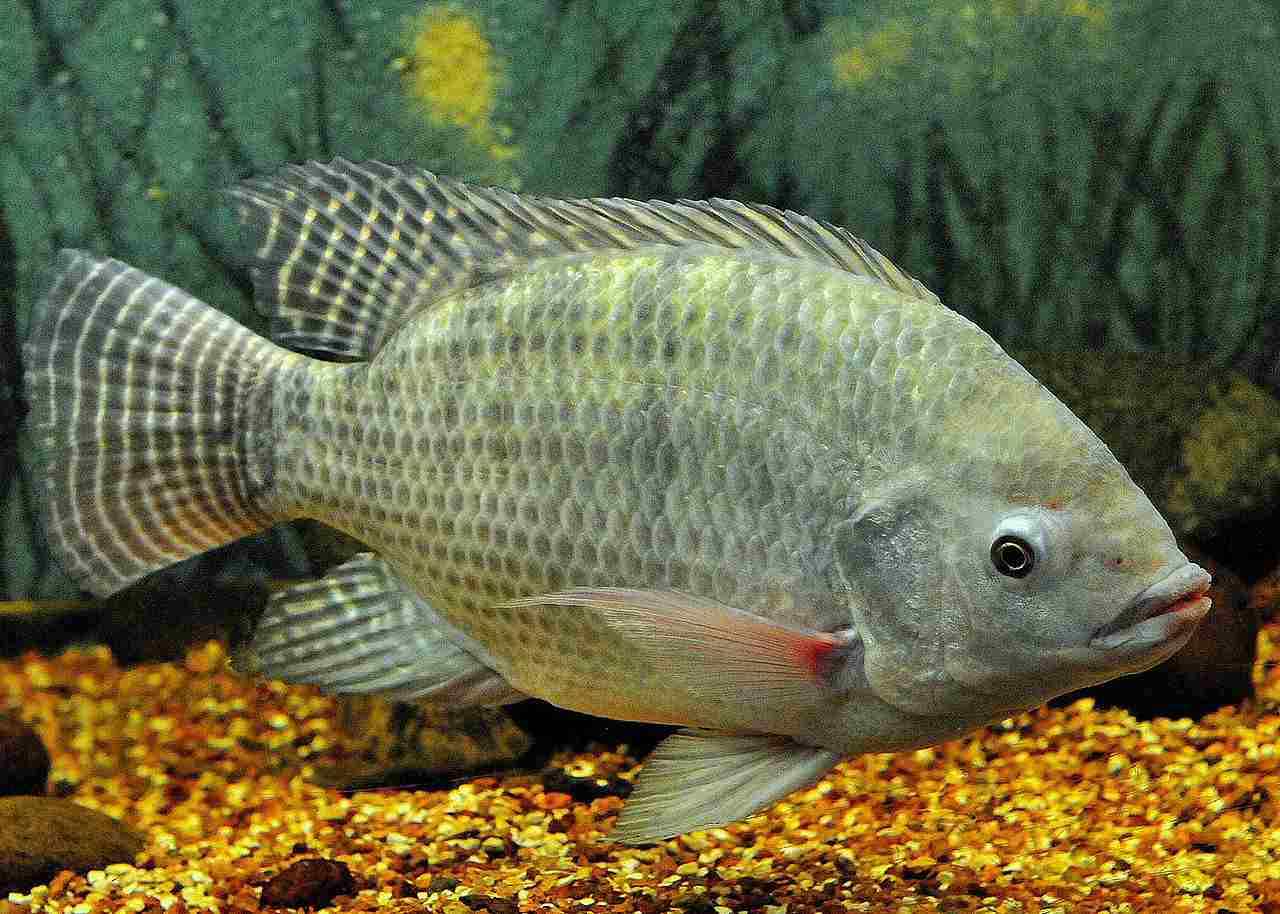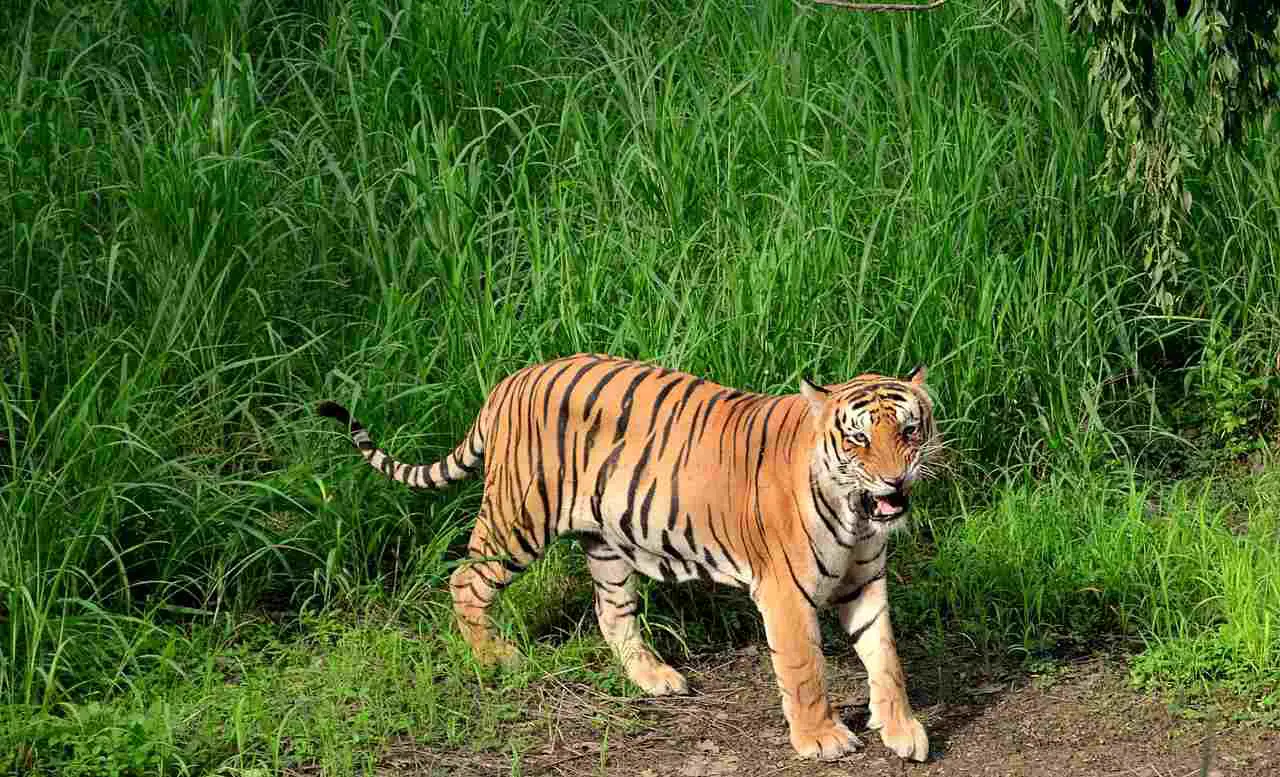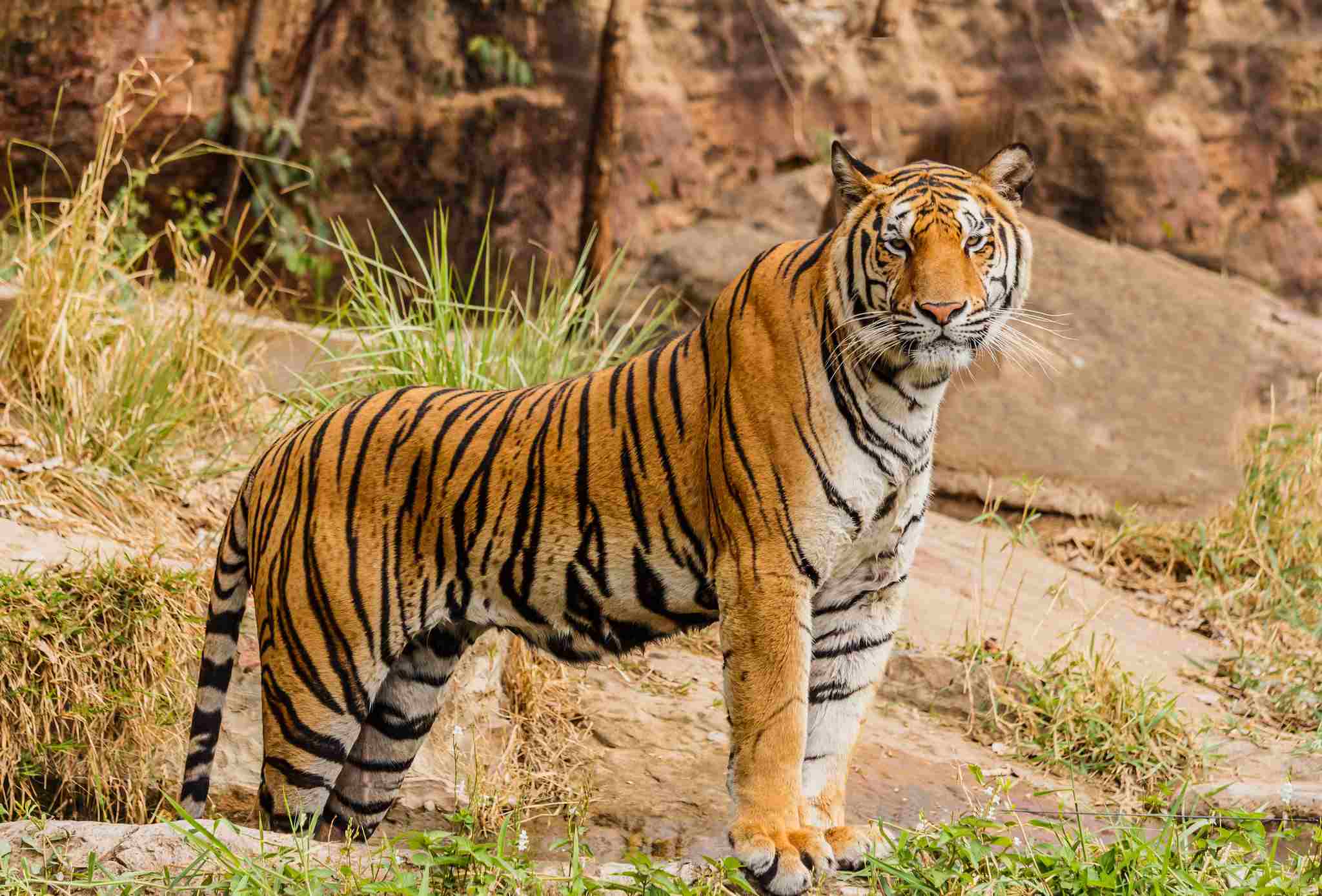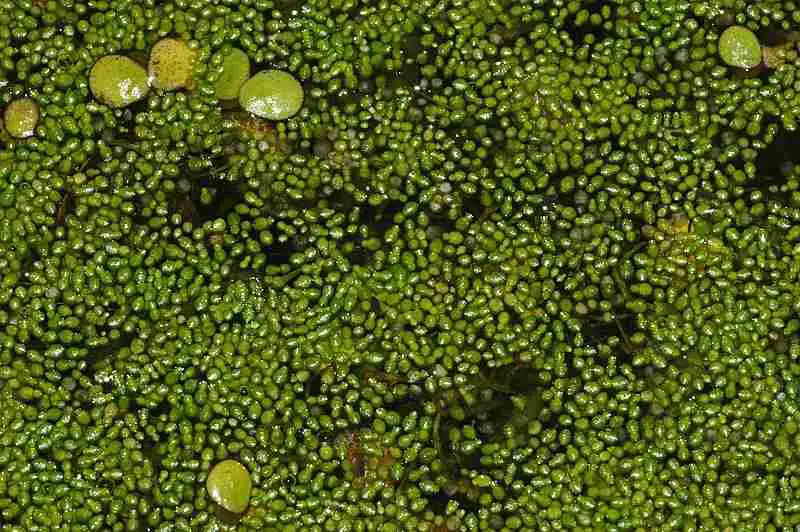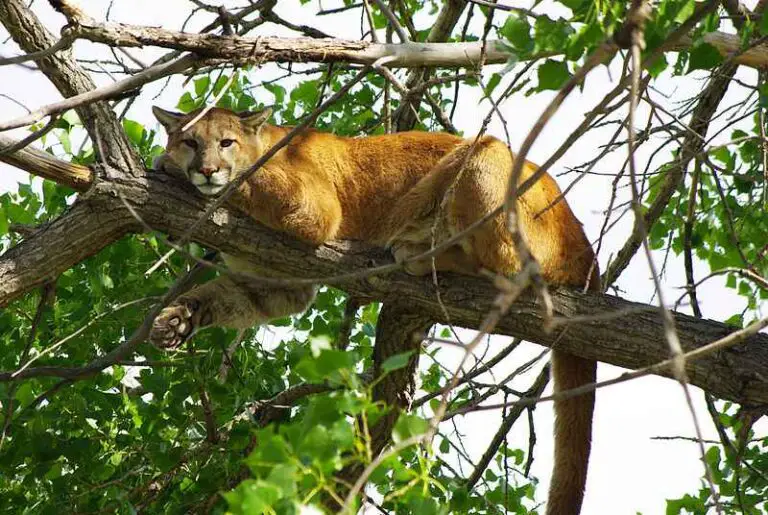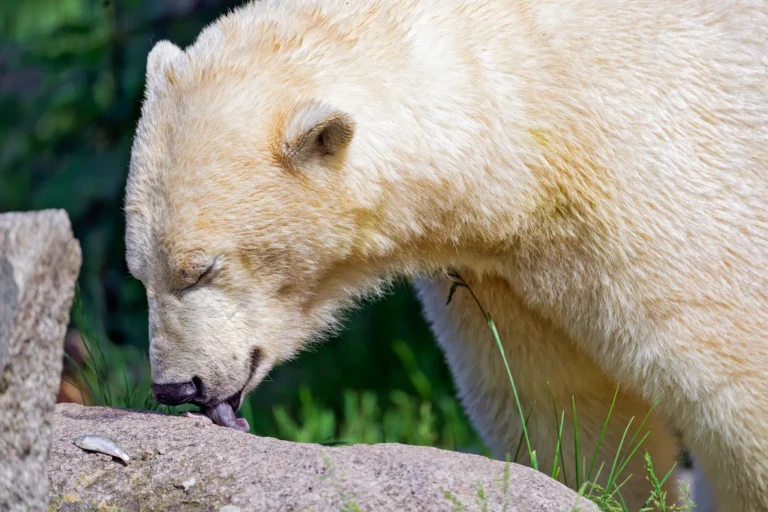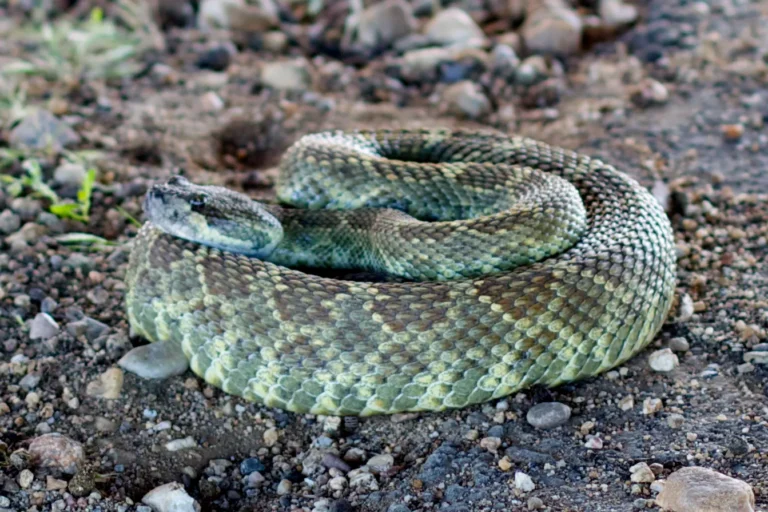7+ Carnivores in Freshwater Ecosystems and Their Characteristics
Carnivores in freshwater ecosystems are diverse and play essential roles in maintaining ecological balance. They include predatory fish like Largemouth Bass and Northern Pike, apex predators such as Crocodiles and Alligators, amphibians like the Tiger Salamander and Pond Frog, avian hunters such as the Osprey and Kingfisher, and the notorious Piranha. Each species contributes to controlling prey populations and shaping the dynamics of their respective habitats.
1. Largemouth Bass
The Largemouth Bass (Micropterus salmoides) is a charismatic and widely distributed freshwater carnivore, renowned among anglers for its size, strength, and cunning behavior. Found predominantly in lakes, reservoirs, rivers, and ponds across North America, they thrive in diverse aquatic habitats ranging from clear, weedy shallows to deep, murky waters. Recognizable by their distinctive large mouth, olive-green coloring, and lateral black stripe, Largemouth Bass are apex predators within their ecosystems, exerting significant influence on the structure and dynamics of fish communities.
As voracious ambush predators, Largemouth Bass possess an opportunistic feeding strategy, preying on a wide variety of aquatic organisms, including fish, crayfish, insects, and even small mammals and birds that happen to venture too close to the water’s edge. Their ability to strike with lightning speed, aided by their powerful jaws and sharp teeth, makes them formidable hunters. However, despite their aggressive nature, Largemouth Bass are also sensitive to environmental conditions, particularly water temperature and dissolved oxygen levels, which can affect their feeding patterns and overall health.
During the spawning season, typically in spring or early summer, male Largemouth Bass construct nests in shallow, protected areas, where females deposit their eggs for fertilization. This reproductive behavior is crucial for maintaining healthy populations and ensures the continued presence of Largemouth Bass in freshwater ecosystems. Furthermore, their role as top predators helps regulate prey populations, preventing overpopulation and promoting species diversity within aquatic communities.
Despite their popularity among recreational anglers, Largemouth Bass face various threats, including habitat degradation, pollution, and overfishing. Conservation efforts aimed at preserving their habitats and implementing sustainable fishing practices are essential for ensuring the long-term viability of Largemouth Bass populations and the health of freshwater ecosystems they inhabit.
2. Northern Pike
The Northern Pike (Esox lucius) is a formidable carnivore found in freshwater ecosystems throughout North America, Europe, and parts of Asia. With its elongated body, sharp teeth, and voracious appetite, the Northern Pike is a top predator in many lakes, rivers, and streams. Its ability to adapt to a wide range of habitats, including clear waters, weed beds, and even brackish estuaries, contributes to its success as an apex predator.
Feeding primarily on fish, Northern Pike are ambush hunters, relying on stealth and explosive bursts of speed to capture their prey. They often lie in wait among vegetation or other cover, striking with lightning-fast precision when unsuspecting fish pass by. This hunting strategy, coupled with their powerful jaws and rows of razor-sharp teeth, allows Northern Pike to tackle prey larger than themselves, including smaller fish, frogs, and even small mammals or birds that venture too close to the water’s edge.
During the spawning season, typically in early spring, Northern Pike migrate to shallow, vegetated areas where they deposit their adhesive eggs. These spawning grounds provide crucial habitat for the development of young pike and contribute to the overall health of freshwater ecosystems. However, Northern Pike populations can be sensitive to environmental disturbances, such as habitat loss, pollution, and overfishing, which can disrupt their reproductive success and long-term viability.
Conservation efforts focused on preserving the habitat and implementing sustainable management practices are essential for maintaining healthy Northern Pike populations and the balance of freshwater ecosystems they inhabit. By protecting critical spawning areas, regulating fishing pressure, and reducing pollution, we can help ensure the continued presence of Northern Pike and their important role as top predators in aquatic food webs.
3. Crocodile
Crocodiles are apex predators in freshwater ecosystems, known for their powerful jaws, stealthy hunting techniques, and ancient lineage. Found in tropical regions around the world, crocodiles play a crucial role in regulating prey populations and maintaining the balance of aquatic ecosystems. With their streamlined bodies, keen eyesight, and ability to remain submerged for extended periods, crocodiles are highly efficient hunters, capable of ambushing prey with surprising speed and precision.
Feeding primarily on fish, amphibians, reptiles, birds, and mammals, crocodiles are opportunistic carnivores, adapting their diet to suit seasonal changes and local prey availability. Their powerful jaws, lined with rows of sharp teeth, allow them to seize and overpower a wide variety of prey, including animals much larger than themselves. Crocodiles often hunt by lurking beneath the water’s surface, waiting for unsuspecting prey to approach before launching a swift and deadly attack.
During the breeding season, female crocodiles construct nests of vegetation and soil along the water’s edge, where they lay their eggs and carefully guard them until they hatch. This reproductive behavior is essential for maintaining healthy crocodile populations and ensuring the survival of future generations. However, crocodiles face numerous threats, including habitat loss, pollution, and human persecution, which can impact their ability to reproduce and thrive in their natural environment.
Conservation efforts focused on protecting crocodile habitats, regulating hunting and poaching, and promoting coexistence between crocodiles and human communities are essential for ensuring the long-term survival of these iconic predators. By safeguarding the ecological integrity of freshwater ecosystems and respecting the vital role of crocodiles within them, we can help preserve these ancient reptiles for generations to come.
4. Alligator
Alligators are iconic carnivores found in freshwater ecosystems throughout the southeastern United States and parts of China. With their armored bodies, powerful jaws, and keen hunting instincts, alligators are apex predators that play a vital role in regulating prey populations and maintaining the balance of aquatic ecosystems. Their presence influences the distribution and behavior of other species, shaping the dynamics of entire ecosystems.
Feeding primarily on fish, amphibians, reptiles, birds, and mammals, alligators are opportunistic hunters, preying on a wide variety of aquatic and terrestrial organisms. Their hunting techniques vary depending on the size and behavior of their prey, ranging from stealthy ambushes to swift pursuits in open water. Alligators are capable of overpowering prey much larger than themselves, thanks to their immense strength and powerful jaws, which exert tremendous pressure when closing.
During the breeding season, typically in late spring or early summer, female alligators construct nests of vegetation and soil in marshy areas, where they lay their eggs and guard them until they hatch. This reproductive behavior is crucial for maintaining healthy alligator populations and ensuring the survival of future generations. However, alligators face numerous threats, including habitat loss, pollution, and human persecution, which can impact their ability to reproduce and thrive in their natural environment.
Conservation efforts focused on protecting alligator habitats, regulating hunting and poaching, and promoting coexistence between alligators and human communities are essential for ensuring the long-term survival of these iconic predators. By safeguarding the ecological integrity of freshwater ecosystems and respecting the vital role of alligators within them, we can help preserve these ancient reptiles for generations to come.
5. Tiger Salamander
The Tiger Salamander (Ambystoma tigrinum) is a fascinating carnivore inhabiting freshwater ecosystems across North America, from Canada to Mexico. Named for its striking yellow or orange markings reminiscent of a tiger’s stripes, this amphibian is an apex predator in its aquatic habitats. Despite spending much of its adult life on land, the Tiger Salamander relies on freshwater environments for breeding and sustenance, making it a key player in maintaining ecological balance.
Feeding primarily on insects, worms, small crustaceans, and even smaller amphibians or fish, Tiger Salamanders employ a sit-and-wait hunting strategy, remaining motionless until prey ventures within striking distance. Their keen sense of smell and sensitive skin help them detect the presence of potential prey, allowing them to ambush with precision. This predatory behavior not only sustains Tiger Salamander populations but also helps control insect populations, thereby influencing the overall health of freshwater ecosystems.
During the breeding season, typically in late winter or early spring, Tiger Salamanders migrate to freshwater breeding ponds or wetlands, where they engage in elaborate courtship rituals and deposit their eggs in clusters attached to underwater vegetation. These breeding sites are essential for the continuation of Tiger Salamander populations and serve as critical habitats for a variety of other aquatic organisms.
Conservation efforts aimed at preserving wetland habitats, controlling pollution, and mitigating the impacts of invasive species are essential for ensuring the long-term survival of Tiger Salamanders and the health of freshwater ecosystems they inhabit. By protecting their breeding sites and promoting habitat connectivity, we can help sustain populations of this iconic amphibian and maintain the ecological balance of freshwater habitats.
6. Osprey
The Osprey (Pandion haliaetus) is a magnificent raptor that reigns as a supreme aerial predator in freshwater ecosystems around the world. With its distinctive appearance, including a white head, dark back, and sharp talons, the Osprey is well-equipped for hunting fish, which comprise the bulk of its diet. Often found near lakes, rivers, and coastal areas, Ospreys play a crucial role in regulating fish populations and maintaining the health of aquatic ecosystems.
Ospreys are expert fishermen, employing keen eyesight and incredible diving abilities to capture their prey. Hovering high above the water’s surface, they scan for signs of fish below before executing a dramatic dive, plunging feet-first into the water to snatch their target with razor-sharp talons. This hunting technique, combined with their powerful wings and aerodynamic physique, allows Ospreys to make precise and efficient strikes, often emerging from the water with their catch firmly gripped in their talons.
During the breeding season, typically in spring or early summer, Ospreys construct large stick nests atop trees, cliffs, or man-made structures near water bodies. These nests serve as incubators for their eggs and provide shelter for the growing chicks. The availability of suitable nesting sites, along with an ample supply of fish, is crucial for the reproductive success of Ospreys and the sustainability of their populations.
Conservation efforts focused on protecting Osprey nesting sites, preserving fish habitats, and reducing human disturbance are essential for ensuring the long-term survival of these majestic raptors and the health of freshwater ecosystems they inhabit. By safeguarding their breeding grounds and promoting responsible fishing practices, we can help sustain Osprey populations and maintain the ecological balance of aquatic environments.
7. Kingfisher
The Kingfisher (Alcedo atthis) is a captivating avian predator known for its distinctive appearance, vibrant plumage, and remarkable fishing abilities. Found in freshwater ecosystems around the world, including rivers, streams, lakes, and marshes, Kingfishers are skilled hunters that play a vital role in controlling fish populations and maintaining the ecological balance of aquatic habitats.
With their sleek, aerodynamic bodies and sharp, pointed bills, Kingfishers are perfectly adapted for diving and catching fish. Perched on branches or other vantage points overlooking the water, they patiently wait for the perfect moment to strike. When prey is spotted below, Kingfishers dive headfirst into the water with remarkable speed and agility, emerging moments later with their catch securely held in their beaks.
Kingfishers are not only expert fishermen but also important indicators of freshwater ecosystem health. Their presence in an area indicates the presence of clean water and abundant fish populations, making them valuable indicators of environmental quality. Additionally, Kingfishers are known for their distinctive calls and territorial behaviors, which contribute to the rich tapestry of sounds and interactions in freshwater habitats.
Conservation efforts aimed at preserving water quality, protecting riparian habitats, and minimizing human disturbance are essential for ensuring the long-term survival of Kingfisher populations and the health of freshwater ecosystems they inhabit. By safeguarding their nesting sites and promoting habitat restoration efforts, we can help sustain Kingfisher populations and maintain the ecological balance of aquatic environments.
8. Pond Frog
Pond Frogs, also known as common frogs or water frogs, are ubiquitous amphibians found in freshwater ecosystems across the globe. These carnivorous creatures play a vital role in controlling insect populations and contributing to the nutrient cycling of aquatic habitats. With their webbed feet, bulging eyes, and smooth, moist skin, Pond Frogs are well-adapted to life both in and out of the water.
Feeding primarily on insects, spiders, small fish, and even smaller frogs, Pond Frogs are opportunistic hunters that employ a sit-and-wait strategy to capture their prey. Perched near the water’s edge or partially submerged in shallow pools, they use their keen senses to detect the slightest movement or vibration, signaling the presence of potential prey. With lightning-fast reflexes, Pond Frogs lunge forward to snatch their quarry with their sticky tongues, quickly dispatching it with their powerful jaws.
During the breeding season, typically in spring or early summer, Pond Frogs congregate in ponds, marshes, and other wetland habitats to engage in courtship rituals and breed. Male frogs produce distinctive calls to attract females, creating a cacophony of sound that fills the air during the breeding season. After mating, females deposit their eggs in gelatinous masses attached to submerged vegetation, where they hatch into tadpoles and undergo metamorphosis into adult frogs.
Conservation efforts focused on preserving wetland habitats, controlling pollution, and mitigating the impacts of invasive species are essential for ensuring the long-term survival of Pond Frogs and the health of freshwater ecosystems they inhabit. By protecting their breeding sites and promoting habitat connectivity, we can help sustain populations of these vital amphibians and maintain the ecological balance of aquatic environments.
9. Piranha
Piranhas are legendary carnivorous fish native to the freshwater rivers and lakes of South America, known for their sharp teeth, voracious appetites, and fearsome reputation. Despite their infamous portrayal in popular culture, piranhas play a crucial role in regulating fish populations and maintaining the ecological balance of their aquatic habitats. With their streamlined bodies, keen senses, and powerful jaws, piranhas are highly efficient predators capable of stripping prey down to the bone in a matter of minutes.
Feeding primarily on fish, crustaceans, insects, and occasionally small mammals or birds, piranhas are opportunistic hunters that rely on group coordination and rapid feeding frenzies to overwhelm their prey. Despite their ferocious reputation, piranhas are more often scavengers than active hunters, feeding on injured or dead animals as well as live prey. Their razor-sharp teeth, arranged in interlocking rows, are well-suited for tearing flesh and inflicting devastating wounds on their victims.
During the dry season, when water levels recede and food sources become scarce, piranhas may form large shoals and migrate in search of suitable habitats with abundant food resources. This behavior helps them survive in challenging environmental conditions and ensures their continued presence in freshwater ecosystems. However, piranhas face numerous threats, including habitat loss, overfishing, and human persecution, which can impact their populations and disrupt the balance of aquatic ecosystems.
Conservation efforts focused on protecting piranha habitats, regulating fishing practices, and promoting sustainable management of freshwater resources are essential for ensuring the long-term survival of these iconic predators and the health of the ecosystems they inhabit. By safeguarding their natural habitats and promoting coexistence between piranhas and human communities, we can help preserve the ecological integrity of freshwater ecosystems for future generations.
*Summary
-
Largemouth Bass:
-
Widely distributed in North America.
-
Apex predators in lakes, rivers, and ponds.
-
Voracious ambush hunters with a diverse diet.
-
Crucial for regulating prey populations and maintaining species diversity.
-
Vulnerable to habitat degradation and overfishing.
-
-
Northern Pike:
-
Found in North America, Europe, and Asia.
-
Apex predators with adaptability to various habitats.
-
Employ ambush tactics to capture prey, including fish and small mammals.
-
Spawn in shallow, vegetated areas during spring.
-
Face threats such as habitat loss and pollution.
-
-
Crocodile:
-
Apex predators in tropical freshwater ecosystems.
-
Opportunistic carnivores feeding on fish, reptiles, and mammals.
-
Hunt by stealth and ambush, exerting influence on prey populations.
-
Nest construction and egg laying are critical for reproduction.
-
Threatened by habitat loss, pollution, and human activities.
-
-
Alligator:
-
Iconic apex predators in southeastern US and China.
-
Feed on fish, amphibians, birds, and mammals.
-
Employ ambush tactics and powerful jaws for hunting.
-
Nest construction and egg laying are vital for reproduction.
-
Face threats such as habitat loss and human persecution.
-
-
Tiger Salamander:
-
Found across North America, playing a role in aquatic ecosystems.
-
Predators feeding on insects, worms, and small amphibians.
-
Employ sit-and-wait strategy for hunting.
-
Breeding in freshwater ponds crucial for population sustainability.
-
Conservation efforts focus on habitat preservation and pollution control.
-
-
Osprey:
-
Majestic raptors found near freshwater bodies worldwide.
-
Expert fish hunters, diving with precision to catch prey.
-
Construct nests near water for breeding.
-
Conservation efforts include protecting nesting sites and fish habitats.
-
Indicators of freshwater ecosystem health.
-
-
Kingfisher:
-
Colorful birds found near rivers, lakes, and streams.
-
Skilled fish hunters using dive-and-catch tactics.
-
Nest construction and breeding behaviors vital for population sustainability.
-
Conservation efforts focus on protecting nesting sites and preserving riparian habitats.
-
Indicators of clean water and abundant fish populations.
-
-
Pond Frog:
-
Common amphibians found in freshwater ecosystems.
-
Feed on insects, spiders, and small fish.
-
Employ sit-and-wait strategy for hunting.
-
Breeding in ponds and wetlands crucial for population sustainability.
-
Conservation efforts focus on wetland preservation and pollution control.
-
-
Piranha:
-
Carnivorous fish native to South American rivers and lakes.
-
Feed on fish, crustaceans, and occasionally small mammals or birds.
-
Employ group coordination and rapid feeding frenzies for hunting.
-
Migrate during dry seasons to find suitable habitats.
-
Face threats such as habitat loss and overfishing.
-
| Carnivores in Freshwater Ecosystems | Summary |
| Largemouth Bass |
– Widely distributed in North America. – Apex predators in lakes, rivers, and ponds. – Voracious ambush hunters with a diverse diet. – Crucial for regulating prey populations and maintaining species diversity. – Vulnerable to habitat degradation and overfishing.
|
| Northern Pike |
– Found in North America, Europe, and Asia. – Apex predators with adaptability to various habitats. – Employ ambush tactics to capture prey, including fish and small mammals. – Spawn in shallow, vegetated areas during spring. – Face threats such as habitat loss and pollution.
|
| Crocodile |
– Apex predators in tropical freshwater ecosystems. – Opportunistic carnivores feeding on fish, reptiles, and mammals. – Hunt by stealth and ambush, exerting influence on prey populations. – Nest construction and egg laying are critical for reproduction. – Threatened by habitat loss, pollution, and human activities.
|
| Alligator |
– Iconic apex predators in southeastern US and China. – Feed on fish, amphibians, birds, and mammals. – Employ ambush tactics and powerful jaws for hunting. – Nest construction and egg laying are vital for reproduction. – Face threats such as habitat loss and human persecution.
|
| Tiger Salamander |
– Found across North America, playing a role in aquatic ecosystems. – Predators feeding on insects, worms, and small amphibians. – Employ sit-and-wait strategy for hunting. – Breeding in freshwater ponds crucial for population sustainability. – Conservation efforts focus on habitat preservation and pollution control.
|
| Osprey |
– Majestic raptors found near freshwater bodies worldwide. – Expert fish hunters, diving with precision to catch prey. – Construct nests near water for breeding. – Conservation efforts include protecting nesting sites and fish habitats. – Indicators of freshwater ecosystem health.
|
| Kingfisher |
– Colorful birds found near rivers, lakes, and streams. – Skilled fish hunters using dive-and-catch tactics. – Nest construction and breeding behaviors vital for population sustainability. – Conservation efforts focus on protecting nesting sites and preserving riparian habitats. – Indicators of clean water and abundant fish populations.
|
| Pond Frog |
– Common amphibians found in freshwater ecosystems. – Feed on insects, spiders, and small fish. – Employ sit-and-wait strategy for hunting. – Breeding in ponds and wetlands crucial for population sustainability. – Conservation efforts focus on wetland preservation and pollution control.
|
| Piranha |
– Carnivorous fish native to South American rivers and lakes. – Feed on fish, crustaceans, and occasionally small mammals or birds. – Employ group coordination and rapid feeding frenzies for hunting. – Migrate during dry seasons to find suitable habitats. – Face threats such as habitat loss and overfishing.
|
Related FAQs
Q: Are Largemouth Bass dangerous to humans? A: Largemouth Bass are not considered dangerous to humans. While they possess sharp teeth and can deliver a painful bite if handled improperly, they are not aggressive towards humans and generally avoid interaction.
Q: Do Northern Pike pose a threat to swimmers? A: Northern Pike are not typically a threat to swimmers. They are solitary predators and usually avoid areas frequented by humans. However, caution should be exercised around these fish, especially if they are caught while fishing, as they have sharp teeth and can deliver a bite if mishandled.
Q: Are Crocodiles and Alligators the same? A: While crocodiles and alligators belong to the same biological order (Crocodylia), they are separate species with distinct characteristics. Alligators generally have broader, U-shaped snouts, while crocodiles have longer, V-shaped snouts. Additionally, their habitats and geographic distributions differ.
Q: Do Tiger Salamanders make good pets? A: Tiger Salamanders can make interesting pets for experienced amphibian keepers. However, they have specific habitat and dietary requirements that must be met to ensure their health and well-being. Additionally, some species of Tiger Salamanders are protected or regulated due to conservation concerns.
Q: Are Ospreys endangered? A: Ospreys are not considered endangered, but their populations have faced declines in the past due to habitat loss, pollution, and persecution. Conservation efforts, such as habitat restoration and protection, have helped stabilize and even increase Osprey populations in many areas.
Q: How can I attract Kingfishers to my backyard? A: To attract Kingfishers to your backyard, create a suitable habitat with water features such as ponds or streams stocked with fish. Provide perches such as branches or posts near the water for Kingfishers to hunt from. Additionally, avoid using pesticides or chemicals that could harm their food sources.
Q: Can Pond Frogs live in fish tanks? A: Pond Frogs can live in captivity in suitable aquatic habitats, such as well-maintained fish tanks or paludariums. However, it’s essential to recreate their natural environment with proper water quality, temperature, hiding spots, and a varied diet. Additionally, always ensure that any frogs kept in captivity are legally acquired and not taken from the wild.
Q: Are Piranhas legal to own as pets? A: Piranhas are legal to own as pets in some jurisdictions but may be restricted or prohibited in others due to concerns about their potential danger to humans and ecosystems. It’s essential to research local laws and regulations before obtaining a Piranha as a pet and to provide appropriate care and housing to meet their needs.
